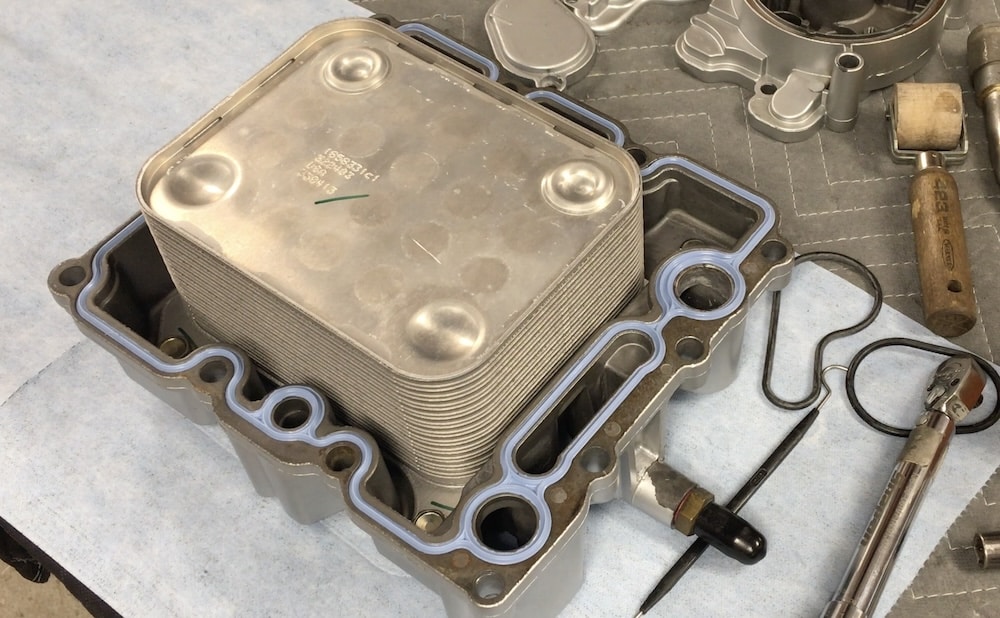Introduction:
If you own a 7.3L or 6.0L Powerstroke, you know that keeping engine oil cool is critical to performance and longevity. The oil cooler plays a major role in making sure your truck runs efficiently. But when it fails, it can lead to major engine damage. Let’s dive into what the oil cooler does, why it fails, symptoms of failure, and the best upgrade options.
What is an Oil Cooler?
The oil cooler in a Powerstroke diesel engine is a heat exchanger designed to regulate oil temperature by transferring heat away from the engine oil and into the engine’s coolant system. This prevents oil from overheating, maintaining proper lubrication and reducing wear on internal components. For Powerstroke HEUI Injectors (7.3L and 6.0l) this is crucial given the Engine Oil is what fires your fuel injectors. Think of all the heat that builds up being pressurized to 2000PSI or More over and over again.

Here’s how it works:
- Engine oil flows through the oil cooler, which is designed with small internal passages to maximize heat transfer.
- Coolant from the engine circulates around these passages, absorbing excess heat from the oil.
- The now-cooled oil is sent back into the engine, ensuring consistent operating temperatures and protecting engine components.
The 7.3L Powerstroke (1994.5-2003) has an external, tube-style oil cooler mounted on the side of the engine block. The 6.0L Powerstroke (2003-2007) features an internally mounted oil cooler located beneath the intake manifold.
Why Do they Fail?
Oil coolers in both the 7.3L and 6.0L Powerstroke engines are known to fail over time due to the following reasons:
- Clogging from Contaminants – Over time, coolant deposits, rust, and sediment can clog the small coolant passages inside the oil cooler, reducing its effectiveness.
- Coolant Breakdown – Poor coolant maintenance leads to excessive scale buildup, accelerating oil cooler failure.
- Internal Leaks – If the cooler fails internally, it can allow engine oil and coolant to mix, leading to catastrophic engine damage.
- Heat Stress and Metal Fatigue – Constant heating and cooling cycles cause metal fatigue, leading to cracks or leaks in the cooler.
6.0L Powerstroke’s Infamous Design Flaw – The 6.0L’s oil cooler is notorious for clogging due to its fine coolant passageways, which are highly susceptible to blockage from dirty or improperly maintained coolant. And why this is a common diesel repair.
Symptoms of a Failing Oil Cooler
A failing oil cooler can cause serious engine damage if left unaddressed. Here are the most common symptoms:
- High Engine Oil Temperatures – If your oil temps are significantly higher than coolant temps, your oil cooler might be clogged.
- Oil in Coolant or Coolant in Oil – A failed cooler can cause cross-contamination between the oil and coolant, leading to a chocolate-milk-like sludge in your coolant reservoir.
- White Smoke from the Exhaust – This could indicate oil or coolant burning due to internal leaks.
- Loss of Coolant with No Visible Leaks – Internal failures can lead to coolant loss, which might not always be visible externally.
- Engine Overheating – A restricted oil cooler can cause elevated engine temperatures, leading to potential damage.
- Low Oil Pressure Warnings – If the oil cooler is blocked or leaking, it can reduce oil pressure, triggering dashboard warnings.
Best Oil Cooler Upgrades for 7.3L and 6.0L Powerstroke
If your oil cooler is failing, replacing it with an upgraded unit can significantly improve reliability and engine performance. Here are some of the best upgrade options for this diesel repair:
For 7.3L Powerstroke (1994.5-2003):
- OEM Replacement (Motorcraft/Ford) – If your 7.3L oil cooler is leaking or clogged, an OEM replacement is a solid option.
- Upgraded Aftermarket Coolers – Companies like Mishimoto and Driven Diesel offer higher-capacity oil coolers with improved cooling efficiency.
- External Oil Cooler Modifications – Some owners opt to install larger, remote-mounted oil coolers for better cooling performance.
For 6.0L Powerstroke (2003-2007):
- Bullet Proof Diesel Air-to-Oil Cooler Kit – Instead of relying on the factory liquid-to-liquid oil cooler, this air-to-oil system eliminates clogging issues entirely and dramatically improves reliability.
- OEM Ford Upgraded Oil Cooler (with Updated Coolant Filtration) – If sticking with a liquid-to-liquid cooler, installing an OEM Ford unit with an added coolant filter helps reduce the risk of future clogs.
Sinister Diesel or Mishimoto High-Performance Oil Coolers – These offer improved internal designs to resist clogging and increase oil cooling capacity.
Final Thoughts: Don’t Ignore a Bad Oil Cooler
If you drive a 7.3L or 6.0L Powerstroke, keeping an eye on oil temps and coolant quality is crucial to preventing failure. Regular coolant flushes, installing a coolant filtration system, and upgrading can save you from costly diesel repairs.
If your truck is overheating, mixing fluids, or losing power, don’t wait! Check your oil cooler and consider an upgrade before it turns into a major problem.
Have you upgraded your Powerstroke’s oil cooler? Let us know how we can help! We are a professional diesel and automotive repair shop.

